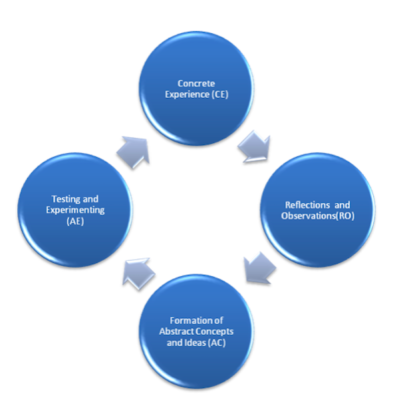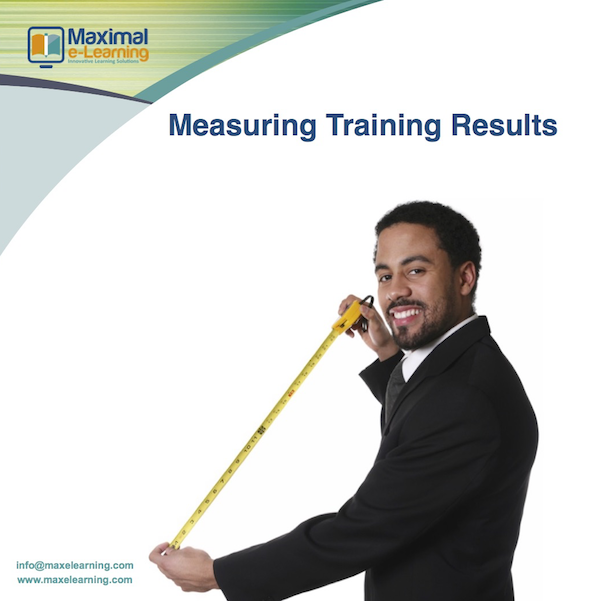Is Your Training Effective?
Do you often feel, as an HR or L&D practitioner, that you ran around in circles, trying to figure out how to help each of your training participants to take away the best knowledge?
Realising that everyone has a different learning style, we often feel confused about what form of training delivery to adopt. We ran from one teaching method to another to make sure that all trainees are benefiting from the course.
As if this was not enough, we have to think about the ways to evaluate training progress, and showing the results that training brings.
Would you like to find a solution to get you through the training session successfully and demonstrate tangible results on your training? Then read our series of articles, where we will focus on learning the different evaluation strategies used today to measure the results on training. These will include types of evaluation tools, creating an evaluation plan, assessing learning before, during and after training and calculating ROI.
Kolb’s Learning Styles
“ I hear, I forget. What I see, I remember. What I do, I understand.” Confucious
The learning process is fundamental to training and in order to train individuals effectively, the trainer must understand that there are four ways that an individual can learn. Although each individual has a preferred style, all four elements must be included for learning to be effective.
This model of training is known as the learning cycle and involves experiencing, observing, thinking, and applying. Developed by David Kolb, it highlights the link between doing and learning. The David Kolb’s four-stage learning process and the four related styles of learning are illustrated in the diagram below.

Kolb’s Learning Cycle looks like this
The Four-Stage Process
A learner’s experience begins with Concrete Experience – things that happen to that individual. The individual then observes the situation, making Reflections and Observations. Next, the individual thinks about what has happened and develops Abstract Concepts. Finally, the individual Actively Experiments with those new ideas, leading to new Concrete Experiences – and the cycle begins all over again.
It is important to remember that this cycle occurs any time learning is required, whether it is learning how to use a new dishwasher at home, learning a new computer program, or trying to train your dog.
Now let’s look at Kolb’s four learning styles and see how they fit in with the learning cycle.
Accommodators
Accommodators are best at concrete experience and active experimentation. These are the people that are often the first to take risks, try new things, and carry out plans. This style of learning is often found in action-oriented, problem-solving jobs, like marketing, sales, and business.
Accommodators:
Are good with people
Can be seen as impatient and demanding because they are so eager to solve the problem
Adapt well to new situations
Use trial and error, intuition, and people resources rather than logic
Do not become attached to a particular plan and will change when required
Divergers
Divergers are best at concrete experience and reflective observation. These are the people that can view all sides of the problem and bring all information together into a cohesive picture. Divergers are often found in the arts, cultural pursuits, and humanitarian efforts.
Divergers:
Are good at generating ideas and are useful in brainstorming sessions
Are typically creative, imaginative, and emotional
Are interested in people
Are organized and logical (although not necessarily in a linear way)
Convergers
Convergers are best at abstract conceptualization and active experimentation. This group is best at applying practical ideas. They work best in situations where there is a single correct answer to a question or situation. Convergers are often found in the physical sciences, such as engineering or biology.
Convergers:
Organize knowledge into hypotheses to identify specific problems, and then use deductive reasoning to arrive at an answer for those problems
Are relatively unemotional
Prefer to deal with people rather than things
Have narrow interests
Do not like to move outside their comfort zone.
Assimilators
Assimilators are best at abstract conceptualization and reflective observation. This style of learning is often found in basic mathematical and scientific disciplines.
Assimilators tend to be:
Less concerned with people
Good at building straw models
Good at inductive reasoning (bringing various observations into a single explanation)
Interested in abstract concepts more than people
More concerned with the theory being logical than its practical uses
Although the above is just a small extract from the vast area of learning and development practice, it may help to enhance your learners’ experiences and deliver results that last.
Our next article will look at the much-debated topic of Training ROI or Kirkpatrick’s Levels of Evaluation, stay subscribed!




Comments
No comment yet.